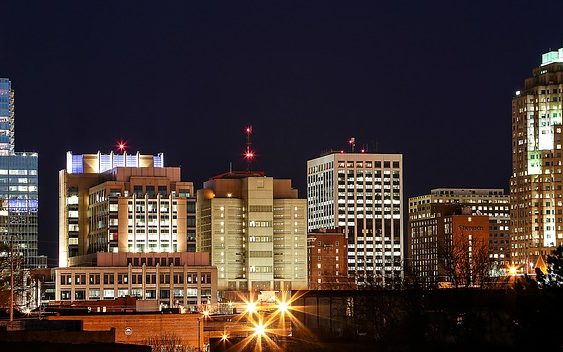- Report: Coastal flooding could threaten 1.4 million homes by midcentury
- Caught on camera | Tornado touches down in Missouri
- Carolina Hurricanes playoff tickets go on sale next week
- Storms kill 6 in the South and Midwest as forecasters warn of catastrophic rains, floods this week
- Weather Impact Alert: Cold front could trigger severe weather in Houston area this weekend | See timeline
Climate change is expanding tornado activity, scientists say

Tropical Storm Helene unleashed heavy rain and flooding
across central North Carolina on Friday, placing areas in the Triangle under
tornado and flash flood warnings.
While the region braced for the storm,
tornadoes touched down in western parts of the state, near Blowing Rock and
Asheville, heightening concerns about the increasing frequency of severe
weather in the state.
The tornadoes brought back memories of recent local
devastation.
In August, an EF3 tornado in Wilson County killed one person and
damaged several structures, including Springfield Middle School. For many, like
Pender Sharp, a Wilson County farmer, the impact was devastating.
“We may
not be able to recover from this,” Sharp said, after losing buildings and
crops. “If you cut your profits in half, you might have to consider doing
something else for a living. And this farm has been in my family for generations.”
Tornadoes in unlikely places
While tornadoes have historically been more common in the
Great Plains, scientists are observing a shift in patterns, with tornado
activity expanding into the Southeast, including North Carolina. Todd W. Moore,
a professor at Middle Tennessee State University, explained that the number of
tornadoes in the Great Plains is trending downward, while tornadoes in the
Southeastern U.S. are increasing.
“After 2000, the Southeastern region’s share of U.S.
tornadoes has risen to 45%, while the Great Plains has decreased to 20%,” Moore
said.
Jon Davis, Chief Meteorologist at Everstream Analytics,
pointed out that large storms like Helene often produce numerous tornadoes.
“Helene was rapidly intensifying at landfall,” Davis said. “That
energy translates into other things, like major inland flooding and tornadic
activity.”
US tornado activity in 2024
This year has seen a record number of tornadoes across the
U.S., with more than 1,495 so far, making it the second-most active year on
record, second only to 2011.
“We’re seeing more tornadoes popping up in unexpected
places,” Davis said. “There’s been somewhat of a shift over the last
couple of decades, with higher tornado frequency in Eastern and Southeastern
regions.”
Davis noted that ocean temperatures, especially in the Gulf of
Mexico and the Atlantic, play a critical role in setting up conditions for
tornadic activity.
The role of climate change
Scientists are increasingly concerned about the role of
climate change in this shifting tornado activity. Global ocean temperatures
have reached unprecedented levels, which are driving extreme weather patterns,
including hurricanes and tornadoes.
“We’re at the highest levels of global
ocean temperatures ever recorded,” Davis noted. “That increase in
water temperatures is fueling more intense storms and expanding tornado-prone
areas.”
Moore agreed, adding that changes in the atmospheric
conditions necessary for tornado formation—wind shear, lift, instability, and
moisture—are also being influenced by climate change. In the Southeastern U.S.,
increasing humidity and instability are creating environments more favorable to
severe storms and tornadoes.
“Studies suggest there is a climate component to these
changes in tornado activity,” Moore explained. “Modeling studies show
that the environment in the Southeastern U.S. is likely to continue favoring
more severe storms and tornadoes into the future.”
Preparing for more tornadoes
In North Carolina, the tornadoes spawned by Tropical Storm
Helene serve as a stark reminder of the state’s growing vulnerability to severe
weather. Michelle Riley, an Epsom resident, hid in her bathroom when a storm
blew through Franklin County in August.
“I’m scared to death,” she said.
Residents like Riley are becoming increasingly concerned
about the possibility of more frequent tornadoes as climate change accelerates.
As scientists continue to study these shifting patterns, the reality of
tornadoes in new and unexpected regions is becoming harder to ignore.